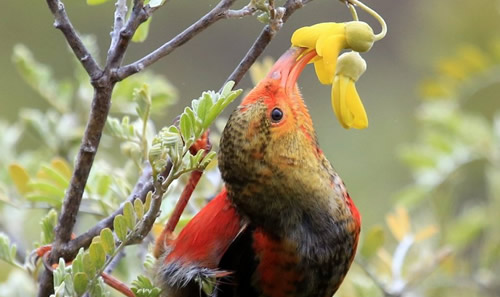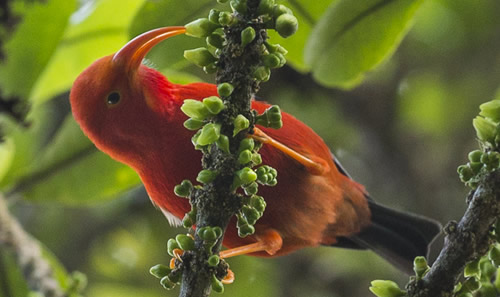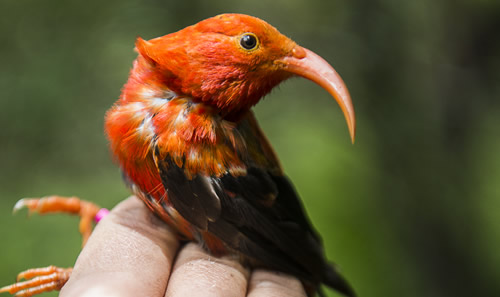'I'iwi
Scarlet Honeycreeper, Drepanis coccinea
The ‘I’iwi is a large, nectarivorous honeycreeper about 6 inches in length. They are brilliant scarlet with black wings and tail. Their bill is long, deeply decurved, and peach-colored. Immature are dull yellow with black spots. Bills are dusky brown at first and becomes brightly colored with age. Their bright colors and unique bill make them one of the most recognizable honeycreepers. ‘I’iwi are loud and raucous and, like ʻĀkohekohe, are often aggressive to other species near nectar sources. Their long decurved bill is thought to be adapted to feeding on long, tubular flowers like the endemic Hawaiian Lobelioids (Campanulaceae). However, they will drink nectar from a wide variety of plant species including some with very small flowers.



